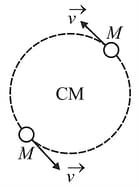Find the ratio of time period of revolution of the planets and .
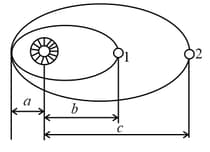

Important Questions on Gravitation
A particle of mass moves along a straight line with constant velocity in the direction at a distance from the axis (figure).

(a) Does the particle possess any angular momentum about the origin?
(b) Explain why the amount of its angular momentum should change or should stay constant.
(c) Show that Kepler's second law is satisfied by showing that the two shaded triangles in the figure have the same area when .
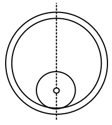
A solid sphere of mass and radius is placed inside a hollow thin spherical shell of mass and radius as shown in figure. A particular of mass is placed on the line joining the two centres at a distance from the point of contract of the sphere and the shell. Find the magnitude of the resultant gravitational force on this particular due to the sphere and the shell if .
As seen in the figure shown below, two spheres of mass and a third sphere of mass form an equilateral triangle and the fourth sphere of mass is at the centre of the triangle. The net gravitational force on that central sphere from the three other spheres is zero.
(a) What is in terms of ?
(b) If we double the value of then what is the magnitude of the net gravitational force on the central sphere?
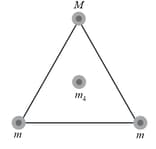
Two planets and travel counterclockwise in circular orbits about a star as shown in figure. The radii of their orbits are in the ratio . At one moment, they are aligned as shown in Fig. (a), making a straight line with the star. During the next five years, the angular displacement of planet is as shown in Fig. (b). What is the angular displacement of planet at this moment?
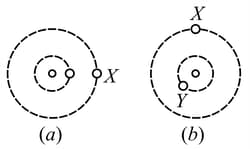
A thin rod with mass is bent in a scmicirclc of radius (figure).

(a) What is its gravitational force (both magnitude and direction on a particle with mass at , the center of curvature?
(b) What would be the force on the particle if the rod were a complete circle?
A binary system consists of two stars that revolve in a circular orbit about a center of mass midway between them. This statement implies that the masses of the two stars are equal (figure). Assume the orbital speed of each star is and the orbital period of each is days. Find the mass of each star.
